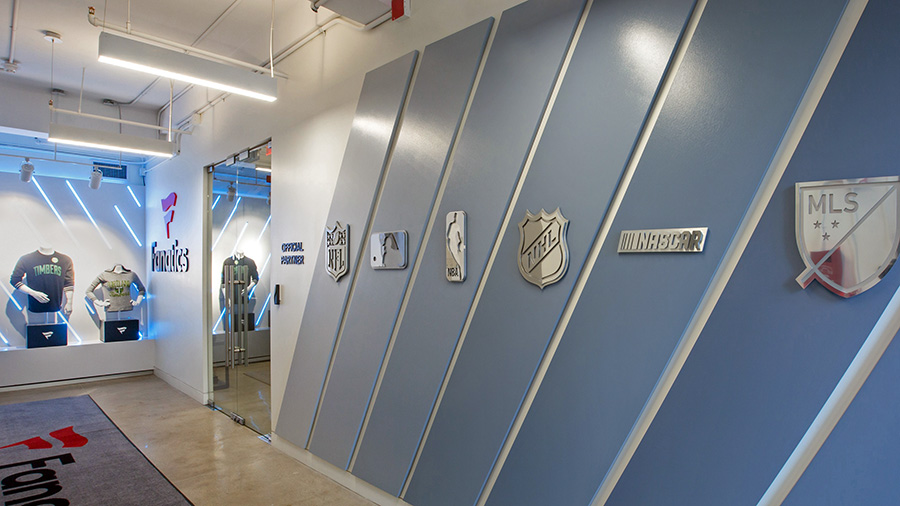Moody’s Investors Service downgraded Fanatics Commerce’s debt rating to reflect the online fan website’s “significantly weaker than expected earnings and cash flow and the risk that the increasingly difficult operating environment will challenge its ability to achieve the appropriate level of returns on its current investments and return EBITDA and EBITDA margins back to their previous levels.”
Moody’s downgraded Fanatics Commerce’s senior secured term loan B to B1 from Ba3 and lowered its outlook to negative from stable. At the same time, Moody’s affirmed Fanatics Commerce’s Ba3 corporate family rating (CFR) and Ba3-PD probability of default rating (PDR).
Moody’s move follows a downgrade by S&P of Fanatics Fanatics Holding in mid-October. Read SGB Media‘s coverage here.
Moody’s said Fanatics Commerce’s adjusted EBITDA has “materially declined” due to planned investments in the fan experience, slowing revenue growth, and increased costs to take on new rights. Inventory levels remain high as Fanatics Commerce continues to work down excess inventory in a more challenging environment while making investments to prepare for new licensing rights. As a result, free cash flow remains “highly negative,” resulting in heavy seasonal borrowing under the company’s $700 million asset base revolving credit facility (ABL). With lower earnings and high seasonal borrowing, Moody’s adjusted debt/EBITDA quickly, but temporarily, spiked to over 9x and interest coverage, as measured by EBITDA less Capex to interest, was negative for the latest twelve-month period ended September 2023; both well below indicated levels needed to maintain the Ba3 rating.
Moody’s added that nevertheless, the affirmation of the Ba3 CFR reflects the company’s commitment to returning leverage near its 3-4x leverage target by the end of 2023 through material debt reduction that would be funded by an equity contribution from its parent company, Fanatics Holdings, Inc. (FHI). FHI does not contractually guarantee Fanatics Commerce debt. However, it has a significant amount of cash on its balance sheet (around $1.7 billion as of September 2023) which is available for investment in its various subsidiaries to support growth and other cash flow needs such as debt reduction. The affirmation also reflects Moody’s expectations for modest revenue and earnings growth in 2024, with a challenging consumer spending environment offset by new license arrangements and cost reduction efforts, and that the company will maintain adequate liquidity through a return to modest positive free cash flow and improved excess revolver availability in 2024.
The downgrade of the senior secured term loan B reflects the materially higher than anticipated borrowings under Fanatics Commerce’s $700 million asset-based revolving credit facility and slower than expected business growth. While the company’s senior secured term loan B is secured by substantially all assets of the company, it only has a second lien position on the more liquid assets (receivables and inventory) on which the company’s ABL has a first lien. Moody’s treats the ABL as having a priority position in the capital structure when applying its Loss Given Default for Speculative-Grade Companies Methodology (LGD Methodology).
Moody’s said in its analysis, “Fanatics Commerce’s Ba3 CFR reflects its leading position as an online retailer of licensed sports merchandise and its long-term partnership agreements with major sports leagues and relationships with key suppliers. The rating also reflects governance considerations, particularly Moody’s expectation that the company will maintain balanced financial strategies that will focus on reducing debt and improving leverage over the very near term including with assistance from FHI. The company also benefits from a significant pipeline of potential new and exclusive licensing relationships which should support revenue and EBITDA growth over the next 12-18 months. Fanatics Commerce’s credit profile is constrained by its narrow product focus on sports-related apparel, reliance on its relationships with major sports leagues, teams and suppliers and current weak operating performance.”
Photo courtesy Fanatics Commerce
















